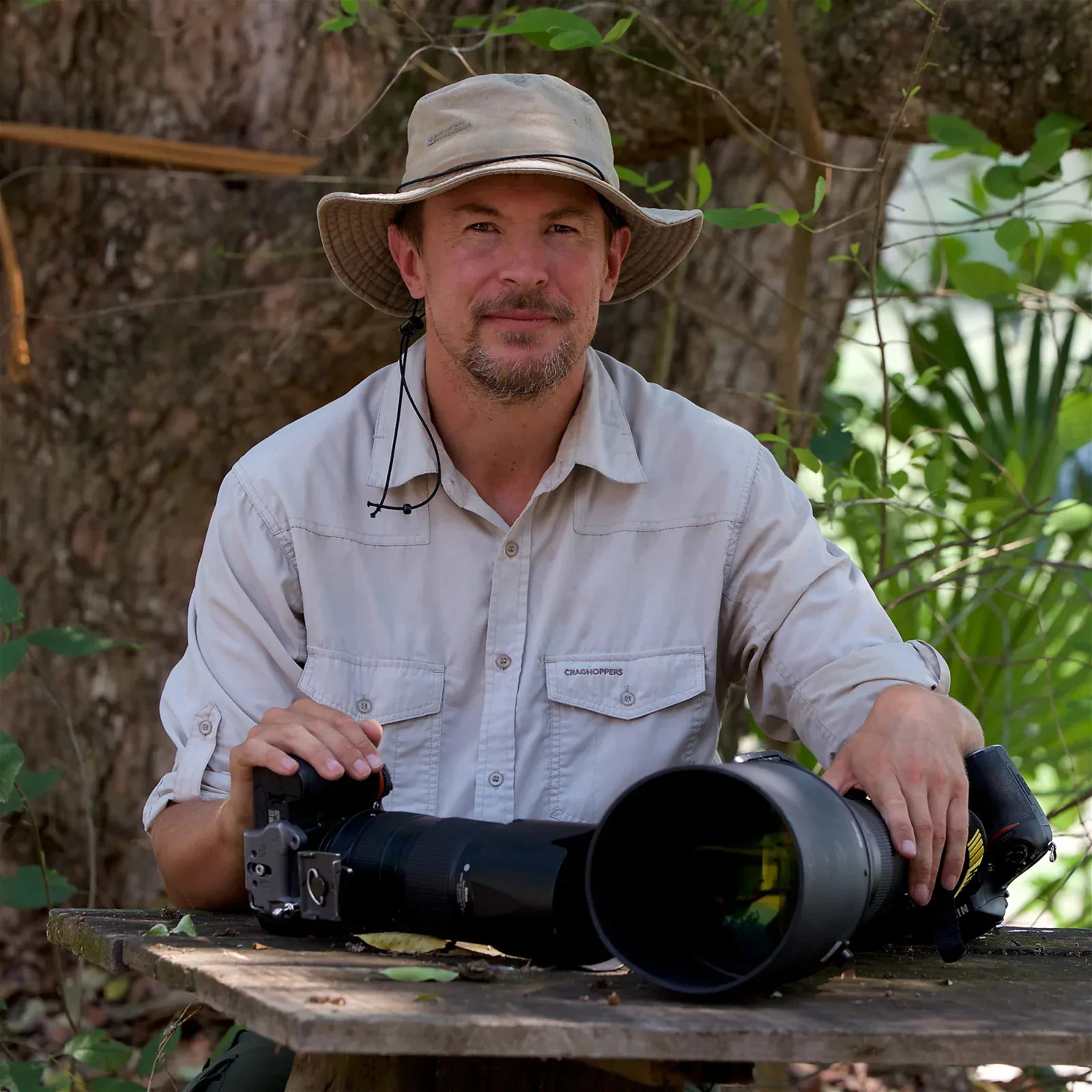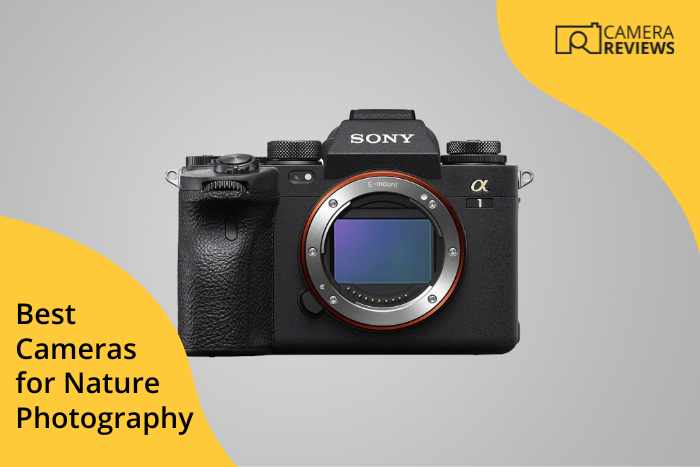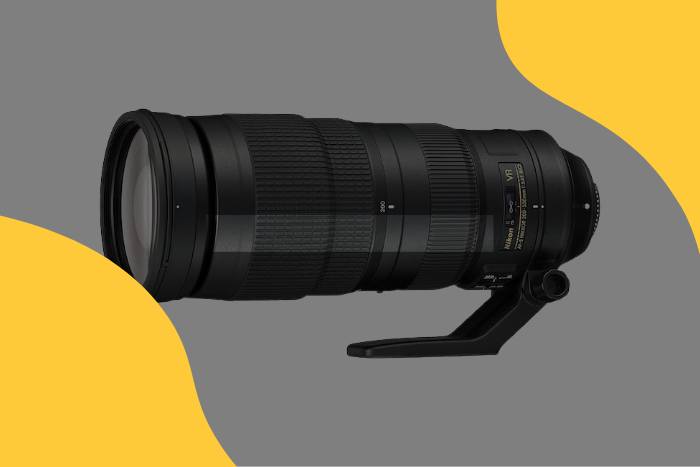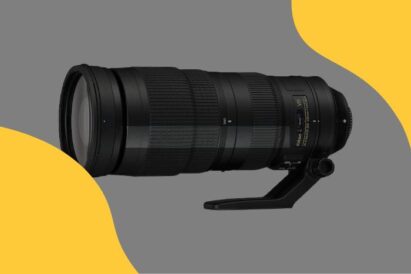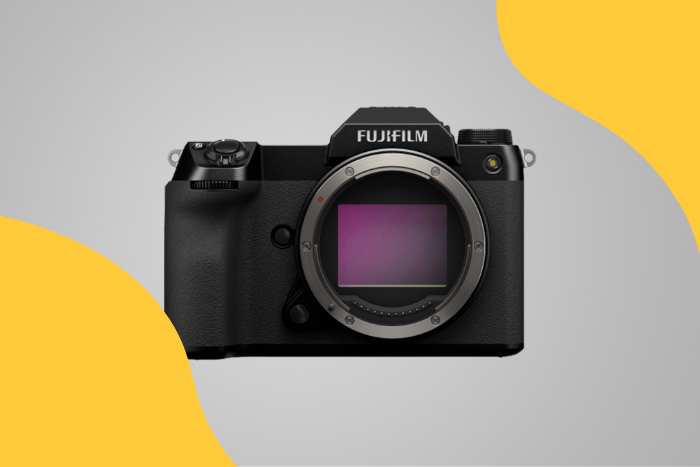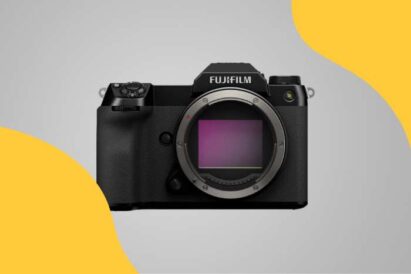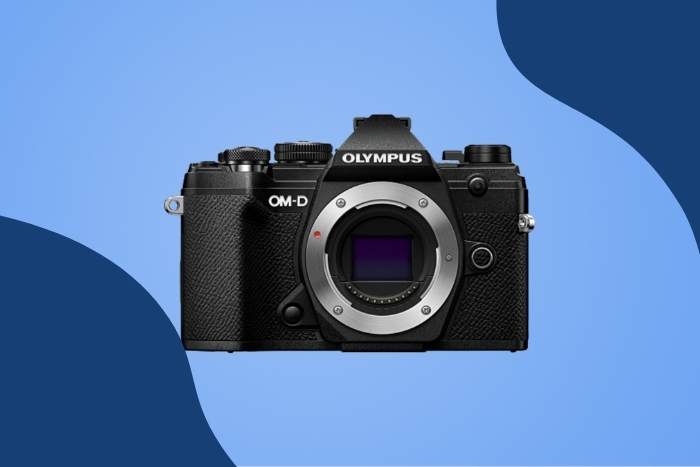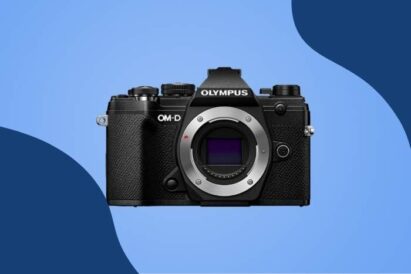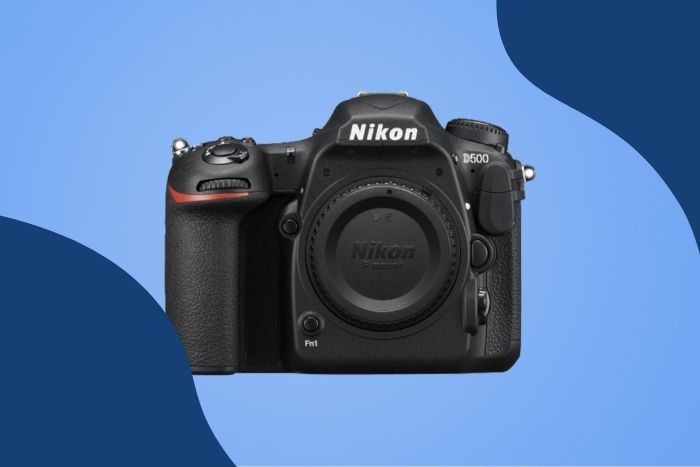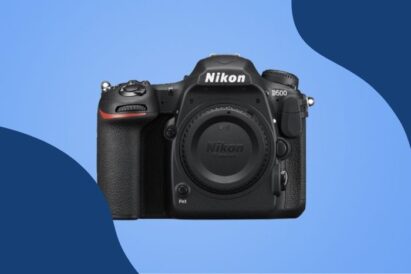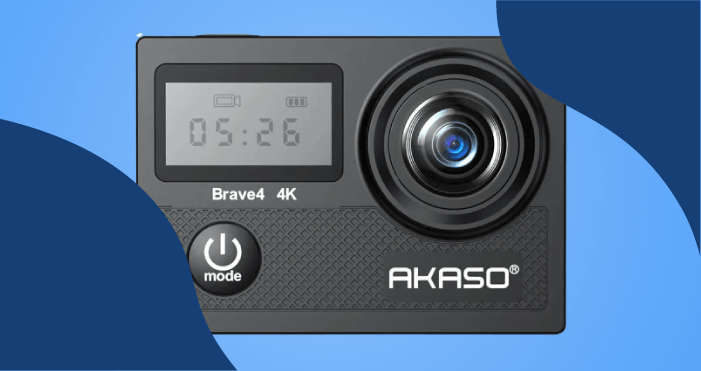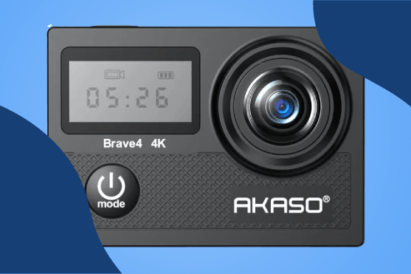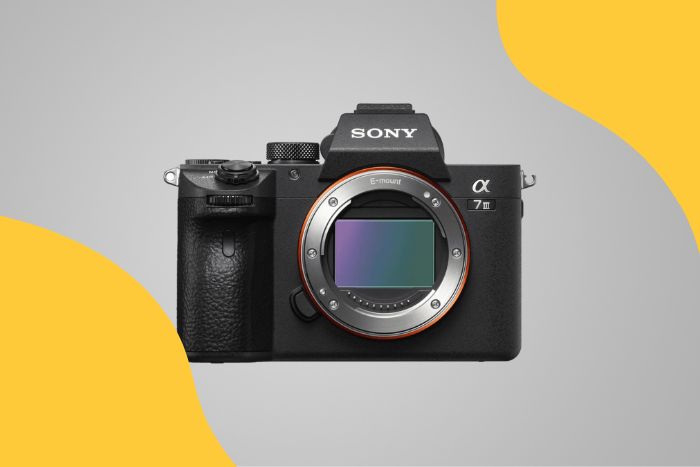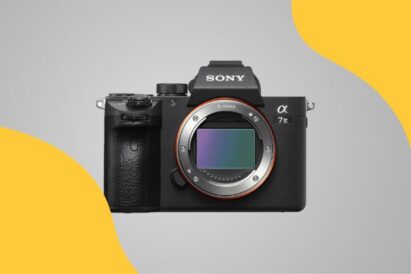When choosing the best camera for nature photography, you need to decide which niches you want to be in. Nature photography covers a lot of separate genres, including macro, landscape, and wildlife.
Are you preparing for a photography trip? Or maybe you want to take better images of birds or local wildlife. Either way, let’s dive in! Here’s our guide to the best camera for nature photography. We’ve included different camera types for beginners, those on a budget, and pros!
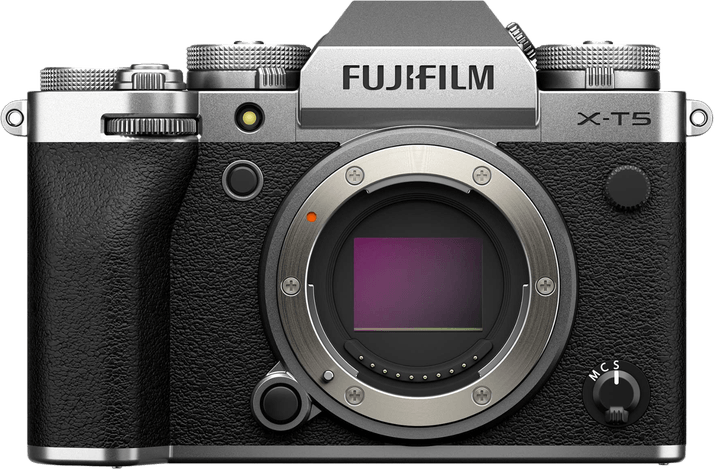
Fujifilm X-T5
The Best Camera for Nature Photography (Beginner vs Pro)
Let’s start with what beginners should look for. Then we’ll discuss which cameras are best for professionals.
A camera’s resolution is important if nature photography means flowers or wide-angle landscapes. So look for something with at least 24 MP.
And if you prefer wildlife photography, you’ll also need a good autofocus (AF) system. You’ll also want eye detection and need a burst rate of more than 10 fps for moving subjects.
You’ll also have to choose between cameras with different sensor types:
- APS-C: If you choose this more compact model, you increase the reach of your lenses and reduce the price without sacrificing features.
- Full Frame: These are the gold standard for resolution and low-light performance. But these tend to be bulkier, heavier, and more expensive than crop sensor models.
- Micro Four Thirds (MFT): These have an even smaller sensor. But Olympus OM System cameras offer many features in a small body.
- Bridge (Superzoom): You can always settle for a bridge camera. The Sony RX10 IV is probably the best of the bunch.
But if you’re a professional photographer, the best options are the Sony a1, the Nikon Z9, and the Canon EOS R3. These mirrorless cameras offer excellent resolutions, frame rates, and autofocus systems. But they’ll each set you back a few thousand dollars!
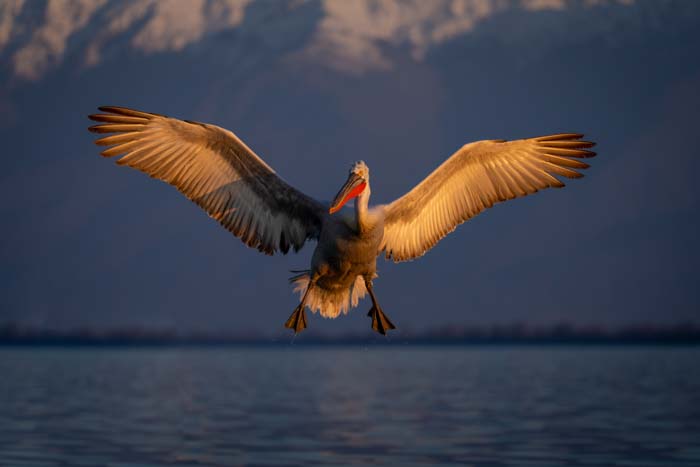
11 Best Cameras for Nature Photography
You’ll notice that every model on our list is a mirrorless camera. That’s because DSLRs are on their way out.
The major manufacturers are no longer supporting DSLRs. And they won’t be releasing many more lenses or DSLR camera bodies in the future.

- Incredible 40.2 MP resolution from an APS-C sensor
- AF uses AI to identify and track moving subjects
- Built-in 5-axis image stabilization
- Pixel Shift Multi-Shot mode for ultra high-resolution photos
- Long-lasting, 680-shot battery
- Outstanding 6.2K video recording
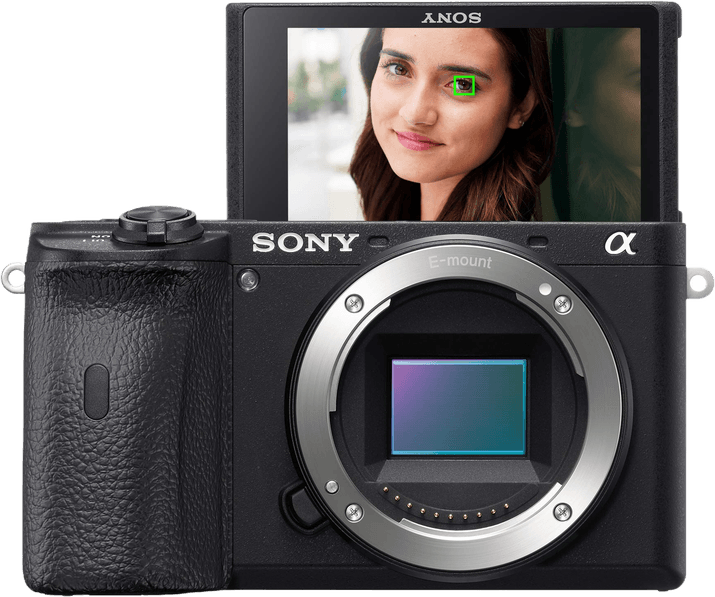
- Astonishing autofocus
- 5-axis in-body image stabilization reduces camera shake
- Silent shooting
- Terrific battery life
- Small, lightweight camera
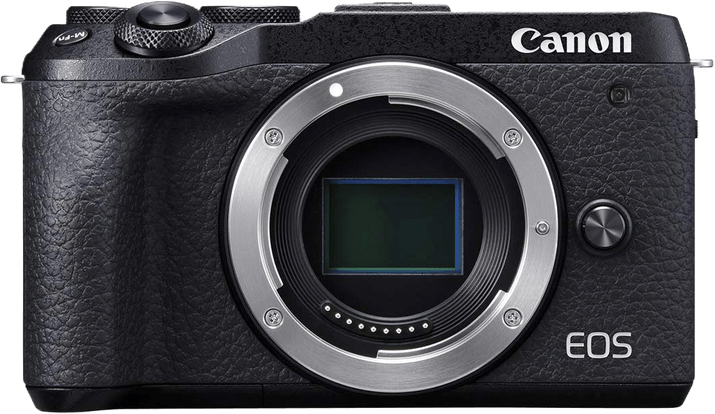
- Powerful 32.5 MP APS-C sensor
- Rapid 30 fps burst mode
- Uncropped 4K video with full AF
- Compact and lightweight body
- Accurate AF with face and eye detection
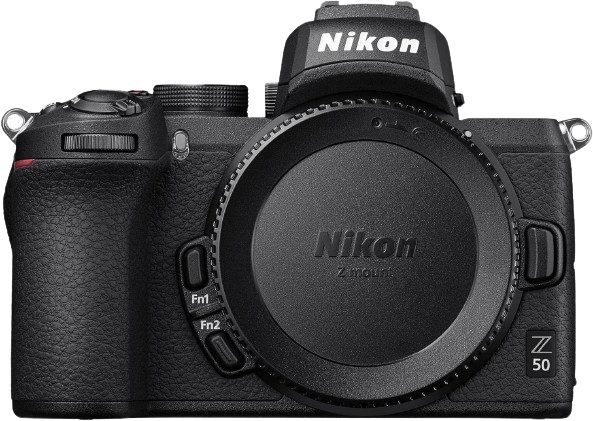
- A more affordable mirrorless option
- Nice to handle and use
- Relatively lightweight and not too bulky
- Solid 4K video performance
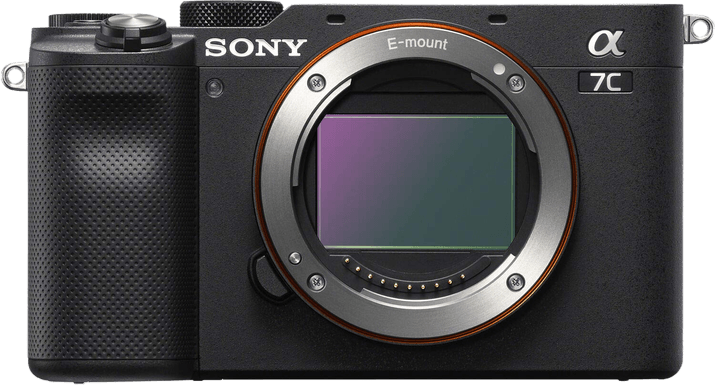
- Tiny, portable full frame body
- Excellent autofocus system
- Good battery life
- Weatherproof magnesium alloy body
- Option of bundling a lightweight 28-60 mm zoom lens kit
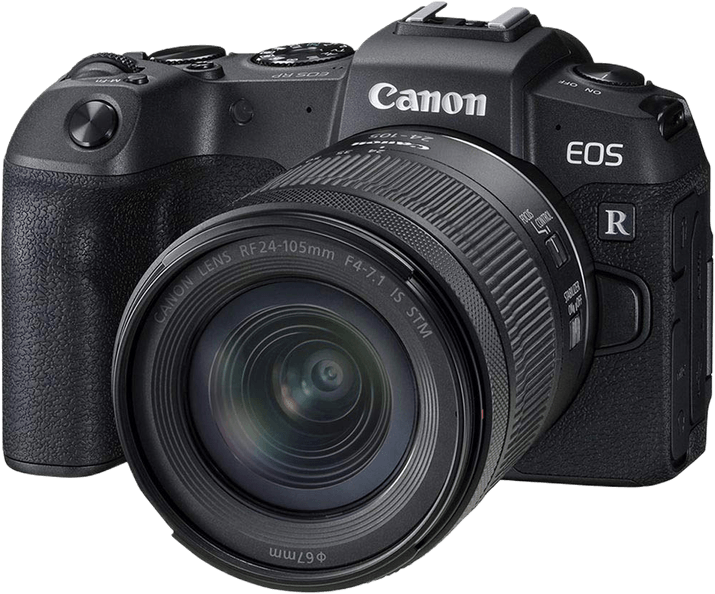
- Affordable full-frame mirrorless
- Lightweight and easy to handle
- Macro stacking and time-lapse
- Convenient Wi-Fi and Bluetooth
- Nice 4K video performance
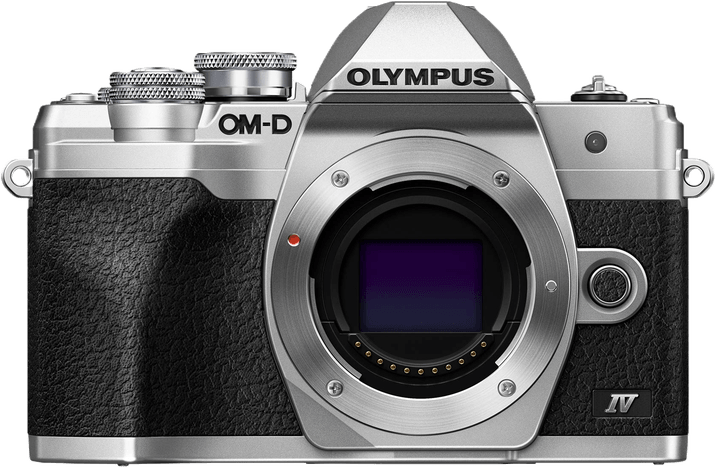
- Affordable
- Very beginner-friendly
- Excellent image quality
- Built-in image stabilization for video and low light
- Endless list of compatible lenses
- Excellent 4K video features
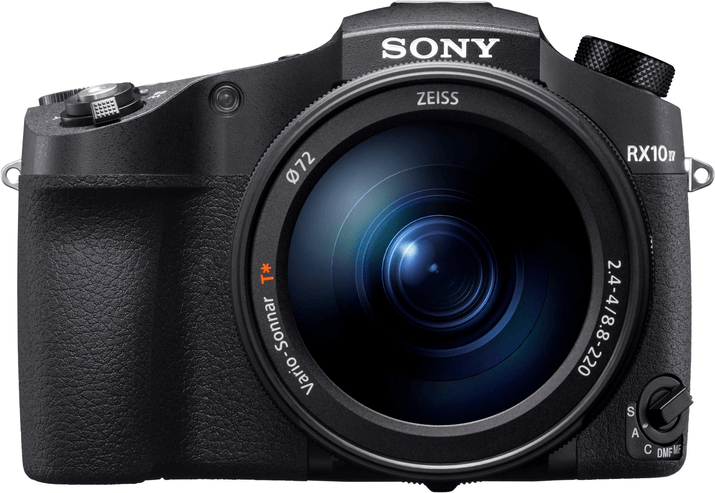
- Impressive 24 fps maximum continuous shooting speed
- Crisp image quality
- Unrivaled lens for a bridge camera
- Incredible 24-600mm zoom range
- 4K video quality
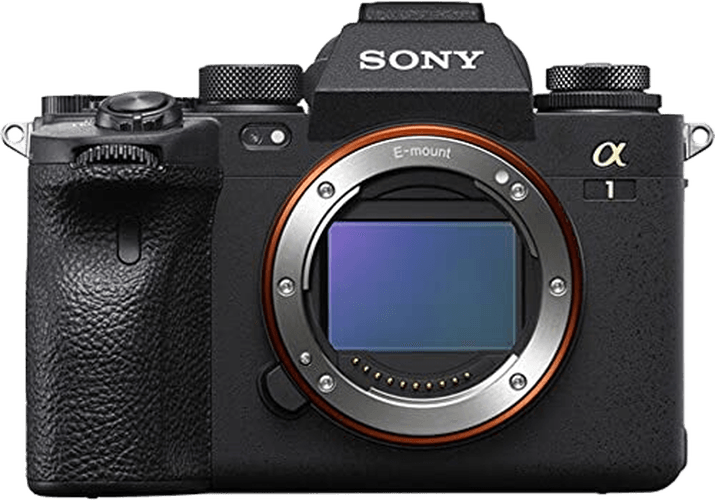
- Large sensor captures tons of detail
- High frame rate of 30 fps
- Eye tracking (human, animal, and bird)
- Easy customization
- Silent shooting for quiet situations
- Incredible 8K/30p Ultra HD video
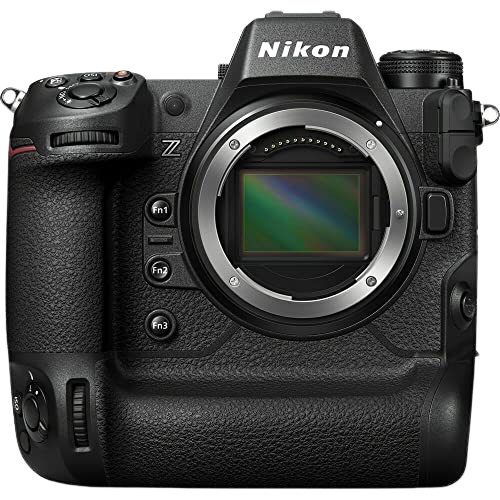
- Ultra-fast image processor
- High, 120 fps compressed frame rate
- No visible rolling shutter
- Excellent battery life
- 8K/60p Ultra HD video
- Unlimited low-resolution recording
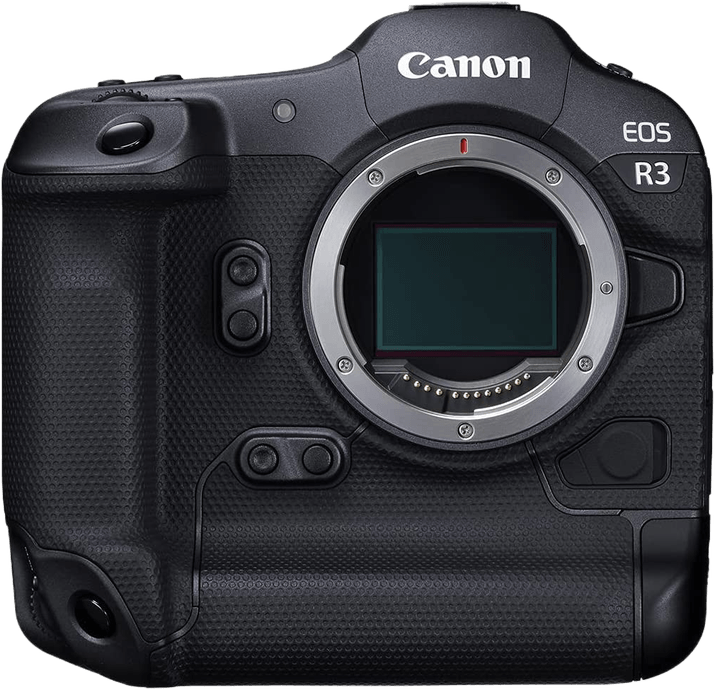
- A high frame rate of 30 fps
- Less noise with BSI stacked sensor
- 8 stops of image stabilization
- 6K / 60p RAW video
- 620-shot battery life
11 Best Cameras for Nature Photography in Detail
Here’s our in-depth guide to each nature photography camera’s features and benefits. Let’s find out the best nature camera for you in more detail!
You can use the jump links below for the most relevant section. The first four sections are our beginner and budget options:
Beginner and Budget Options
The best mirrorless camera for a beginner or someone on a tight budget is probably the Fujifilm X-T5. In a way, that should be no surprise.
Fujifilm doesn’t have a full frame range of mirrorless or DSLR cameras. That means it has never been tempted to reduce the specs to encourage you to buy into a different camera format!
But there are still affordable full frame options from Canon and Sony. And you can also get an Olympus OM System Micro Four Thirds camera or a Sony bridge camera.
APS-C Cameras
1. Fujifilm X-T5

| Camera Type |
Camera Type
|
| Megapixels |
Megapixels
40 MP |
| Sensor Format |
Sensor Format
|
| Sensor Size |
Sensor Size
15.6 x 23.5 mm
|
| Frame Rate |
Frame Rate
15 fps |
| Autofocus Points |
Autofocus Points
425 |
- Incredible 40.2 MP resolution from an APS-C sensor
- AF uses AI to identify and track moving subjects
- Built-in 5-axis image stabilization
- Pixel Shift Multi-Shot mode for ultra high-resolution photos
- Long-lasting, 680-shot battery
- Outstanding 6.2K video recording
- 40.2 MP resolution creates large files for storage
- Lowest ISO is 125, not 100
- Limited RAW buffer for full-resolution burst shooting
- Rolling-shutter effect is sometimes visible with video
- Video has a 1.23x crop factor at full resolution
The Fujifilm X-T5 is a 40 MP APS-C camera. The sensor offers good low-light performance and dynamic range. It has plenty of resolution for landscape, macro, or wildlife shots—even if you want to crop in.
It offers 15 fps (frames per second) continuous shooting, which is plenty for wildlife photography. And you get in-body image stabilization (IBIS) and an improved autofocus system.
The latter includes face and eye detection and tracking. But the tracking is slightly unreliable and not as sticky as it could be.
The fast readout speed means minimal rolling shutter when using the electronic shutter. The JPEG engine is impressive. And a classic draw for Fujifilm cameras is its easy-to-apply film simulation modes, such as Provia, Velvia, and Astia.
It’s quite large for a crop sensor camera. But it offers a comfortable grip and dedicated dials for the ISO, shutter speed, and exposure compensation. You can press these to customize the functions.
It also has DSLR-style front and back control dials and an autofocus joystick. The fully articulating screen is a big bonus. And both the electronic viewfinder (EVF) and touchscreen offer excellent resolutions.
This is also a great camera for video. It offers internal 10-bit recording, and the ability to shoot 4K/60p is impressive. But there’s a slight crop.
You can shoot in Log format, but you also get the Eterna profile if you don’t want to spend time color grading. The only slight problem is that you must use a USB-C dongle to plug headphones into the camera.
Battery life with the new NP-W235 battery is good. You can take 580 shots or 740 in Economy mode as per the CIPA. USB charging is rapid. But you can’t use an external charger.
And finally, the camera’s styling is also easy on the eye. And you have a wide range of native lenses.
2. Sony a6600

| Camera Type |
Camera Type
|
| Megapixels |
Megapixels
24.2 MP |
| Sensor Format |
Sensor Format
|
| Sensor Size |
Sensor Size
15.6 x 23.5 mm
|
| Frame Rate |
Frame Rate
11 fps |
| Autofocus Points |
Autofocus Points
425 |
- Astonishing autofocus
- 5-axis in-body image stabilization reduces camera shake
- Silent shooting
- Terrific battery life
- Small, lightweight camera
- Slow buffer speeds
- Controls feel cramped with large hands
- Limited touchscreen controls
- No pop-up flash
- Rolling shutter recording video
The Sony a6600 is a 24.2 MP APS-C camera. The 11 fps burst rate is fine for wildlife action shots. The autofocus system is best-in-class. And face and eye detection and tracking are what all the other camera manufacturers are trying to copy!
The X-Trans crop sensor is a bit old. It suffers from rolling shutter and doesn’t suit post-processing in Adobe Lightroom. But it does offer good dynamic range and low-light performance for nature photography. And it’s backed up by IBIS.
The body design makes it look like an entry-level camera. And there are a few handling problems.
The old menus need an upgrade. And the grip leaves very little room for your fingers, especially with a wide-aperture lens. The dials are also limited. And all must be operated with your thumb.
The displays are average at best. The rear LCD flips up vertically. But that doesn’t help if you have something in the hot shoe. It also has under a million dots, and the touch functionality is limited.
You can choose your AF point. But you can’t navigate the menu or change exposure settings.
You can shoot good-quality 4K videos without any recording limit. And you also get microphone and headphone jacks. Plus, you have advanced video profiles like S-Log2 and S-Log3.
But the output is limited to 8-bit—even to an external recorder. That means S-Log3 and Hybrid Log Gamma (HLG, a type of HDR) aren’t that useful.
The a6600 is the first Sony APS-C camera to use the higher-capacity FZ100 battery. And battery life is excellent at 810 shots (CIPA). This is more than the full frame bodies that use the same battery!
And this camera has a wide range of compatible lenses. This includes Sony lenses and many others from third-party manufacturers.
3. Canon EOS M6 Mark II

| Camera Type |
Camera Type
|
| Megapixels |
Megapixels
33 MP |
| Sensor Format |
Sensor Format
|
| Sensor Size |
Sensor Size
14.9 x 22.3 mm
|
| Frame Rate |
Frame Rate
14 fps |
| Autofocus Points |
Autofocus Points
143 |
- Powerful 32.5 MP APS-C sensor
- Rapid 30 fps burst mode
- Uncropped 4K video with full AF
- Compact and lightweight body
- Accurate AF with face and eye detection
- No in-body image stabilization
- Limited screen articulation
- No built-in viewfinder
- Limited native lens selection
The Canon EOS M6 Mark II is a fast-focusing, fast-shooting camera. And it has a 32.5 MP APS-C sensor, which is plenty for any branch of nature photography.
But the key feature for budding wildlife photographers is the burst rate. This is normally 14 fps, but it rises to 30 fps if you’re happy with 18 MP RAW files.
You can also half-press the shutter to activate pre-shot technology. This lets you capture a half-second of shots before taking a burst!
There’s no IBIS system. But the sensor does offer good image quality, JPEG color, and low-light performance.
Like the a6600, the grip is too small. And most of the controls are on the back, which means your thumb has to do most of the work.
The rear LCD flips up vertically like the a6600, which is a problem if you fit the optional EVF-DC2 attachment. But the touchscreen functionality is more advanced.
The autofocus system doesn’t quite match what you get with Canon full frame cameras. But it’s still rapid, accurate, and easy to use.
If you shoot many videos, you get 4K, but it’s very soft. The other problems are that there’s no headphone jack. And you can’t use the hot shoe to mount the optional EVF with a microphone or external monitor.
Battery life is low at 305 shots (CIPA). And you do get USB charging, but very few chargers are compatible.
There are quite a few APS-C lenses in the Canon range. And there’s even some third-party support.
4. Nikon Z50

| Camera Type |
Camera Type
|
| Megapixels |
Megapixels
21 MP |
| Sensor Format |
Sensor Format
|
| Sensor Size |
Sensor Size
23.5 x 15.7 mm
|
| Frame Rate |
Frame Rate
11 fps |
| Autofocus Points |
Autofocus Points
209 |
- A more affordable mirrorless option
- Nice to handle and use
- Relatively lightweight and not too bulky
- Solid 4K video performance
- 20.8 MP sensor resolution is lower than many close competitors
- Poor battery life
- Only one memory card slot
- Limited native APS-C lenses
The 20.9 MP Z50 is an APS-C mirrorless camera in the Nikon line-up. And it’s a decent option for those on a budget.
The sensor offers good JPEG quality, dynamic range, and low-light performance. This is perfect for beginner nature photography.
But it’s quite old, with no IBIS and relatively low resolution. So it’s less than ideal for landscapes or macro work. Plus, the autofocus is a little unreliable, especially in low-light situations.
The grip is large and comfortable, even with heavier lenses. And there are two control dials on the front and back.
The rear panel flips downwards rather than upwards, which means it doesn’t get in the way of anything in the hot shoe. But that means you can’t use it with a tripod.
You get 4K video without a crop, but there’s no headphone jack. And the battery life is quite low at 320 shots (CIPA). But you can use USB charging with just about any cable.
There are currently only three native (Z DX) lenses available. But the Z50 works with all Nikon Z lenses. And you can also buy the FTZ II mount adapter to access compatible DSLR lenses. But full-frame lenses tend to be bigger and heavier to use.
Full Frame Cameras
Are you committed to nature photography and don’t want to have to swap lenses in mid-career? You can make the jump to a full frame camera. The best options at a reasonable price are probably the Sony a7C and the Canon EOS RP.
5. Sony a7C

| Camera Type |
Camera Type
|
| Megapixels |
Megapixels
24.2 MP |
| Sensor Format |
Sensor Format
|
| Sensor Size |
Sensor Size
23.8 x 35.6 mm
|
| Frame Rate |
Frame Rate
10 fps |
| Autofocus Points |
Autofocus Points
693 |
- Tiny, portable full frame body
- Excellent autofocus system
- Good battery life
- Weatherproof magnesium alloy body
- Option of bundling a lightweight 28-60 mm zoom lens kit
- Only two customizable buttons
- Small electronic viewfinder
- No touchscreen menus
- Only has one memory card slot
The Sony a7C is a compact 24 MP full frame camera. It has five-axis image stabilization and a 10 fps continuous shooting speed, which is a little low for wildlife photography.
Its best feature for nature photography is the hybrid AF system it shares with Sony’s high-end mirrorless cameras. You get real-time tracking and eye detection for humans and animals, and it’s been tuned for recording video.
The body is rugged for outdoor use. It’s weather- and dust-resistant. And the handling is good, helped by a fully articulating touchscreen.
You can shoot over-sampled 4K video footage at 30 fps with a 1.2x crop. But you must drop to Full HD at 120 fps if you want slow motion.
You also get profiles like HLG, S-Log2, and S-Log-3. Plus, there are 3.5 mm headphone and microphone ports.
The FZ100 battery offers 680 shots per charge with the viewfinder or 740 with the LCD. There’s a USB-C port for charging. And like the a6600, this camera has a wide range of compatible Sony lenses.
6. Canon EOS RP

| Camera Type |
Camera Type
|
| Megapixels |
Megapixels
26 MP |
| Sensor Format |
Sensor Format
|
| Sensor Size |
Sensor Size
24 x 35.9 mm
|
| Frame Rate |
Frame Rate
5 fps |
| Autofocus Points |
Autofocus Points
4,779 |
- Affordable full-frame mirrorless
- Lightweight and easy to handle
- Macro stacking and time-lapse
- Convenient Wi-Fi and Bluetooth
- Nice 4K video performance
- 5 fps max burst is slow compared to competitors
- Relatively poor 250-shot battery life
- Doesn't function while charging
- 4K video is cropped 1.6x
The 26 MP Canon EOS RP is a compact, affordable full frame body. It’s travel-friendly and ideal for a beginner nature photographer on the go. Or it can be a second body for a more experienced enthusiast.
But wildlife photographers will be disappointed. It has a continuous shooting speed of only 4 fps and a slow readout speed, leading to rolling shutter.
And the sensor offers good JPEG image quality. But the RAW files offer limited flexibility in post-processing.
As always, with Canon cameras, the Dual Pixel autofocus is excellent for nature photography. But it can only be used in Live View or when filming.
The RP is the first Canon camera to offer eye detection in Al Servo AF (continuous focus) mode. But it only works well at short distances and varies with the AF motor speed of the lens.
The EOS RP is the smallest and lightest full frame model on the market. But the controls aren’t cramped or finicky. The twin control dials on the front and back come in handy.
The grip is deep and comfortable. But your pinky may not fit on it! If that happens, you can always buy one of the three optional grip extenders. The camera grips come in black, blue, and red.
The fully articulated rear panel offers an excellent touchscreen interface. It flips out to the side. So it doesn’t get in the way when using a flashgun or a tripod. But the eye sensor isn’t disabled. So you might accidentally switch off the screen.
You get 4K video (with a 1.7x crop) and headphone and microphone ports. Battery life is low at 250 shots (CIPA). And charging only works at USB 2.0 speeds with a limited range of cables.
Plus, there’s no weather sealing. But the matching Canon RF lenses have a gasket to stop dust and moisture from getting in.
Micro Four Thirds Cameras
Even though the sensor is much smaller, Olympus and Panasonic make some great MFT cameras for nature photography.
7. Olympus OM-D E-M10 IV

| Camera Type |
Camera Type
|
| Megapixels |
Megapixels
20 MP |
| Sensor Format |
Sensor Format
|
| Sensor Size |
Sensor Size
13 x 17.4 mm
|
| Frame Rate |
Frame Rate
15 fps |
| Autofocus Points |
Autofocus Points
121 |
- Affordable
- Very beginner-friendly
- Excellent image quality
- Built-in image stabilization for video and low light
- Endless list of compatible lenses
- Excellent 4K video features
- Small sensor
- AF has slow continuous shooting
- Contrast-detection AF system is slower than phase-detection systems
- No microphone and headphone jacks
- Plastic body and isn't weather sealed
The Olympus OM-D E-M10 IV is a DSLR-style, entry-level 20 MP Micro Four Thirds camera. It’s another budget camera. And wildlife photographers will love the 15 fps frame rate, deep buffer, and five-axis IBIS worth up to four stops.
The sensor provides excellent image quality or nature photography. And you get 28 scene modes, various creative filters, and a guided Advanced Photo mode.
But the autofocus system only has 121 points (all slow contrast-detect). And subject tracking is unreliable.
It’s compact and lightweight. And the handling and controls are excellent—apart from the rather complex menus.
The selfie-friendly LCD offers touchscreen controls. But it flips down to face the subject and won’t work with selfie sticks or tripods.
You can shoot excellent 4K footage up to 30 fps. But you need to drop to Full HD for 120 fps high-speed capture. The overall recording limit (according to JEITA) is 80 minutes. But each clip is limited to 29 minutes.
Battery life is poor, and you can only get 360 shots per charge using the LCD. But the Mark IV supports MicroUSB charging for the first time in the E-M10 range.
Lastly, you can access many compatible OM-system lenses for nature photography.
Bridge Cameras
If you don’t mind the much smaller sensor, the great benefit of bridge cameras is the zoom range. If you want to take pictures of animals in the distance, there’s no more convenient and affordable option.
8. Sony CyberShot DSC-RX10 IV

| Camera Type |
Camera Type
|
| Megapixels |
Megapixels
20 MP |
| Sensor Format |
Sensor Format
|
| Sensor Size |
Sensor Size
13.2 x 8.8 mm
|
| Frame Rate |
Frame Rate
24 fps |
| Autofocus Points |
Autofocus Points
315 |
- Impressive 24 fps maximum continuous shooting speed
- Crisp image quality
- Unrivaled lens for a bridge camera
- Incredible 24-600mm zoom range
- 4K video quality
- Expensive price tag
- Not an interchangeable lens camera
- No attached ND filter
- Slow autofocus in video mode
- Heavy for a compact camera
The Sony CyberShot DSC-RX10 IV is a premium 20 MP bridge camera. It’s best suited to wildlife photography with a fixed f/2.4-4 lens. (An equivalent zoom range of 24-600mm.) And it offers 24 fps continuous shooting.
The hybrid AF system has 315 phase-detect focus points. The AF focus points cover 65% of the frame. And the camera achieves a high hit rate when tracking erratic subjects.
You can also program the Auto Exposure Lock (AEL) button for back button focusing. But there’s an important limitation. You can’t focus while zooming in or out. And you also can’t program the stickiness of the AF system.
The sensor provides excellent image quality with a high dynamic range for nature photography. This is thanks to DRO (Dynamic Range Optimizer) and S-Log2.
Rolling shutter is also limited, even for fast-moving subjects. And there’s an image stabilization system. But you don’t get any in-camera RAW conversion.
The grip is comfortable. But the build quality and feel of the buttons are a little disappointing. The three-inch touchscreen is small and only tilts up and down.
It does offer touch tracking in still or video mode and a quick way to zoom in to 100%. But you can’t use it to swipe between images or navigate the menus.
The menus are a little complicated but very customizable. And they’ve been updated with color coding to make life easier.
There’s a My Menu option. And there are also other custom options, including the Memory Recall modes taken from the Sony a9. These allow you to change multiple camera settings by simply pressing a button.
Another is AF Area Registration, which lets you customize the autofocus area. And finally, the Function Menu can hold up to 12 different options. Plus, you can customize 10 buttons in shooting and playback modes.
You get high-quality 4K video without pixel binning. But you can’t use AF tracking or face detection for 1080/120p video.
The profiles include S-Log2 and S-Log3. And you also get a gamma display assist function, proxy recording, and zebra patterns. You can also capture high-speed video at up to 960 fps. Plus, there are both microphone and headphone jacks.
Battery life is 370 shots when using the EVF or 400 with the LCD. You can charge it using USB. But it doesn’t have a standalone charger.
Professional Camera Options
If you’re a professional photographer, there’s really no alternative to a full frame camera. They provide the needed resolution, frame rate, and AF system.
As you might expect, the top three on the market come from Sony, Nikon, and Canon.
9. Sony a1

| Camera Type |
Camera Type
|
| Megapixels |
Megapixels
50.1 MP |
| Sensor Format |
Sensor Format
|
| Sensor Size |
Sensor Size
24 x 35.9 mm
|
| Frame Rate |
Frame Rate
30 fps |
| Autofocus Points |
Autofocus Points
759 |
- Large sensor captures tons of detail
- High frame rate of 30 fps
- Eye tracking (human, animal, and bird)
- Easy customization
- Silent shooting for quiet situations
- Incredible 8K/30p Ultra HD video
- Expensive
- Highest frame rates only for JPEG, HEIF, and lossy compressed RAW files
- Eye tracking only selected manually
- Small rear LCD screen
- No GPS
The a1 is Sony’s flagship mirrorless camera. It comes with a 50 MP full frame sensor. And I have a pair myself. I chose them because they’re great for wildlife photographers.
The resolution is excellent for nature photography. The RAW frame rate of 30 fps is high. And the autofocus system offers the most reliable eye detection and tracking.
The Nikon Z9 and Canon EOS R3 come close. But the Sony AF system is still the gold standard! The AF system provides excellent eye detection and tracking. But it doesn’t work with certain birds, such as pelicans.
There are other failings, too. It’s annoying, for instance, to specify whether you’re shooting a human, animal, or bird.
The new Sony a7R V does that for you. And it even throws in vehicle and insect detection for good measure! Let’s hope the next firmware update brings those features to the a1!
The a1’s EVF is stunningly bright and clear. But the rear touchscreen is small and only tilts up and down.
And some people dislike the ergonomics of Sony cameras. I must admit that I get blisters on my right hand when I use the a1 without the battery grip (to save weight).
Also, I don’t like pushing a button to change my custom shooting mode using the main dial. That’s very tricky to do when using the EVF!
You can shoot in 8K/30p video with various Log profiles. And there are headphone and microphone jacks. But it would be nice to have an oversampled 4K format!
Battery life is only 430 shots with the EVF or 530 with the LCD. But those figures are much higher in the field when you’re likely to be using burst mode virtually all the time. And again, this camera has a wide range of compatible Sony lenses.
10. Nikon Z9

| Camera Type |
Camera Type
|
| Megapixels |
Megapixels
46 MP |
| Sensor Format |
Sensor Format
|
| Sensor Size |
Sensor Size
23.9 x 35.9 mm
|
| Frame Rate |
Frame Rate
30 fps |
| Autofocus Points |
Autofocus Points
493 |
- Ultra-fast image processor
- High, 120 fps compressed frame rate
- No visible rolling shutter
- Excellent battery life
- 8K/60p Ultra HD video
- Unlimited low-resolution recording
- Only 11 MP files at the highest frame
- You can only shoot RAW files at 20 fps
- Tracking can fail with erratic movement
- IBIS not as good as Canon R3
- Autofocus isn't as good for video
- The screen doesn't fully articulate
The Nikon Z9 is a 45.7 MP full frame mirrorless camera perfect for wildlife or nature photography. I considered buying one myself, as I had always been a Nikon shooter. But it didn’t come out in time!
The Z9 is almost the ultimate camera. The resolution, 20 fps RAW burst rate, and autofocus system are all excellent. And the Sony sensor has such a fast readout speed that Nikon has been able to take out the mechanical shutter.
This camera is the first Nikon model to offer 3D tracking and AI-assisted subject recognition. This covers people, animals, and vehicles. And the Z9 in Auto mode can tell what’s in front of it—unlike the a1!
The handling is fine. The dual-grip design makes it easy to shoot in portrait and landscape formats. And the pull-out touchscreen also hinges horizontally and vertically.
The only problems are its size and weight. It’s actually 8% lighter and 20% smaller than the Nikon D6. But a more realistic comparison is with the Sony a1. Comparing the Z9 and a1, the latter is a 21 oz (603 g) lighter!
Like the Sony a1, the Z9 offers 8K/30p video. But this rises to 8K/60p 12-bit capture with a firmware update. It also gives you oversampled 4K capture up to 60p.
Plus, there’s a wide range of video formats, including 8-bit and 10-bit options. The autofocus system also works exceptionally well for video. And it’s more than a match for the Sony a1 or the Canon R3.
Officially, the Z9 only gets 740 shots per charge via the rear LCD. Or you get 700 using the EVF. But this rises to 2,000 to 4,000 in real-world usage. Another way to look at it? You could leave your camera on for six hours before the battery died!
The Nikon Z9 could be a good investment for nature photographers. The number of native Nikon Z lenses is bound to increase in the next few years.
11. Canon EOS R3

| Camera Type |
Camera Type
|
| Megapixels |
Megapixels
24 MP |
| Sensor Format |
Sensor Format
|
| Sensor Size |
Sensor Size
24 x 36 mm
|
| Frame Rate |
Frame Rate
30 fps |
| Autofocus Points |
Autofocus Points
1,053 |
- A high frame rate of 30 fps
- Less noise with BSI stacked sensor
- 8 stops of image stabilization
- 6K / 60p RAW video
- 620-shot battery life
- Relatively expensive
- Low-resolution for some photographers
- No 8K video
- Slowed frame rate with an SD card or low battery
The Canon EOS R3 is a 24 MP full frame camera. It sits at the top of the wildlife photography tree (until the Canon EOS R1 comes out). And the Dual Pixel autofocus system is excellent at tracking people, animals, and vehicles.
There are no real weaknesses apart from the relatively low sensor resolution. If you’re a landscape photographer and prefer more megapixels (MP), you can always buy the EOS R5!
The EOS R3 is the only camera in the Canon line-up with Eye Control AF. This lets you place the focus point in the frame simply by looking at your subject!
Admittedly, it has to be calibrated beforehand. And it doesn’t work for all users. But it’s still a neat trick. Plus, the EVF also has an optical simulation mode. This lets you see the actual scene rather than what the picture is likely to show.
The R3’s built-in grip makes it comfortable in portrait and landscape formats. It’s not as heavy as the Z9. But the Sony a1 is still 9.8 oz (278 g) lighter.
The resolution limits video performance. But you can still shoot 12-bit 6K RAW or oversampled 4K video from a 6K sensor area.
You can also record C-Log3 and RAW videos internally. You do get some overheating in 4K/120p and 6K. But it’s not such a major problem as on the R5. Plus, there are also microphone and headphone jacks and a full-size HDMI port.
Again, there are many compatible Canon RF lenses suitable for nature photography.
Our Verdict
When starting out in nature or wildlife photography, you have a difficult decision. Do you experiment by buying a cheaper camera and seeing how it goes? Or do you go all-in and buy an expensive full frame model with matching lenses?
The specifications of entry-level and professional models vary so much. You generally get what you pay for. If you can afford it, I’d go the whole hog and opt for a full frame model like the Sony a1, Nikon Z9, or Canon EOS R3. But there aren’t many beginners who can’t afford to do that.
High-end models are reserved for the pros and real enthusiasts. They offer high resolution, high frame rates, and autofocus systems that can pick out a bird’s eye at 100 yards! If that’s what you think you need, then feel free. Otherwise, you might want to stick to a budget-friendly APS-C model like the Fujifilm X-T5.

Fujifilm X-T5
Common FAQs
Here are some frequently asked questions we get about cameras for nature photography.
Which Is the Best Camera for Nature Photography Beginners?
The APS-C format is a good compromise between functionality and price for nature photography. So the Fujifilm X-T5 is a good starter camera with excellent resolution.
You get enough features with an APS-C to experiment and discover where you want to go in your photography career without breaking the bank!
But you could upgrade to a full frame model like the Canon EOS RP. Or you can go with a cheaper one like the Olympus OM-D E-M10 IV or the Sony CyberShot DSC-RX10 IV.
Which Type of Camera is Best for Nature Photography?
All other things being equal, a full frame camera will outperform a crop sensor camera for nature photography. But it depends on what you can afford. A good APS-C or MFT camera might be better than an entry-level full frame model.
It also depends on exactly which genre you’re keen on. Resolution is important when taking shots of flowers or landscapes. But frame rate, AF, and low-light performance enter the picture for wildlife photography cameras.
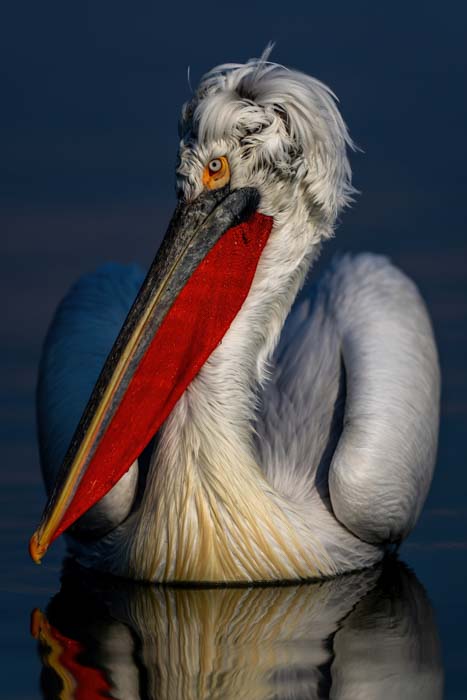
What Kind of Camera is Good for Landscape Pictures?
High-resolution cameras are best for landscapes. Most landscape photographers use a tripod and set their cameras to manual or aperture priority. They set an aperture of f/16 and 100 ISO and then choose the appropriate shutter speed.
There isn’t much motion in the composition. So the shutter speed, autofocus, and frame rate aren’t as important.
What Camera Do Wildlife Photographers Use?
It depends on the photographer’s camera history. Lens compatibility is always a problem for photographers. So they tend to get stuck with a given camera brand. (But I did give up all my Nikon gear to switch to Sony mirrorless cameras!)
If you’re still unsure which camera to go for, check our guides on the best camera for bird photography or safari cameras next!

